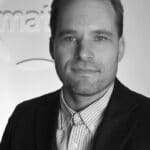With the support of Snæfellsnessbær, Grundafjarðarbær and Stykkishólmsbær, Matís has worked to promote the utilization of raw materials from the ecosystem of Breiðafjörður through increased sustainable value creation, especially with regard to the need for nutrients for feeding fish. Efforts have been made to create environmentally friendly value-creating innovation within the bioeconomy with the above-mentioned support, which has been important for the development work in which Matís participates.
Since 2014, Matís has worked with Snæfellsnesbær, Grundarfjarðarbær and Stykkishólmsbær to analyze the bioeconomy of Snæfellsnes, with special emphasis on ecological innovation and fish feeding on the one hand, and the impact and share of resources on innovation and discovery. Through the collaboration, Matís' work has been aimed at strengthening the knowledge base of environmentally friendly development and promoting better utilization of raw materials with increased sustainability and value creation as a guiding principle.
The description of the modern age as a time of rapid change does not only apply to the application of information technology or so-called technological revolutions. There has been a great deal of development recently in the development of fish nutrition for centuries on and off the coast of the country, this development is in line with what is customary in aquaculture around the world. Manufacturers' efforts to meet the demands of the consumer market have a direct impact on the procedures and product development of companies. Fish feed has undergone major changes as producers strive to sell their products with the most valuable creativity possible. The composition of feed has changed in terms of the distances to which inputs for the production of feed are transported, just as the mode of transport of products on the market. In the collaboration, the development of fish feeding was therefore extensive.
The communication between Matís 'representatives, experts and students, with stakeholders in Snæfellsnes was crucial for the work that has been done within Matís since 2014. The work that took place within the above agreement fell into all three professional emphases of Matís' research and innovation division, which is in force. have been from the first half of 2016, i.e. exploration of genetic resources, product development and the safe value chain of food. The co-operation with the three municipalities has, so to speak, affected Matís' operations as a whole.
The science and knowledge community Matís used the basis for collaboration with the three municipalities, among other things, to integrate the knowledge search of young scientists, the will of the municipalities and the role of Matís, which assists its business friends in increased value creation, food security and public health. This includes Birgir Arnar Smárason's current doctoral studies at the University of Iceland and a master's project of two students, on the one hand in the field of ocean environment and resources at the University of the Basque Country and on the other hand in innovation and entrepreneurship at the University of Oslo.
Snæfellsnes is interested in examining the basis for continuing this collaboration.
A report on the project is available on Matís' website: http://www.matis.is/media/matis/utgafa/11-17-Greining-lifhagkerfis-Snaefellsness.pdf

